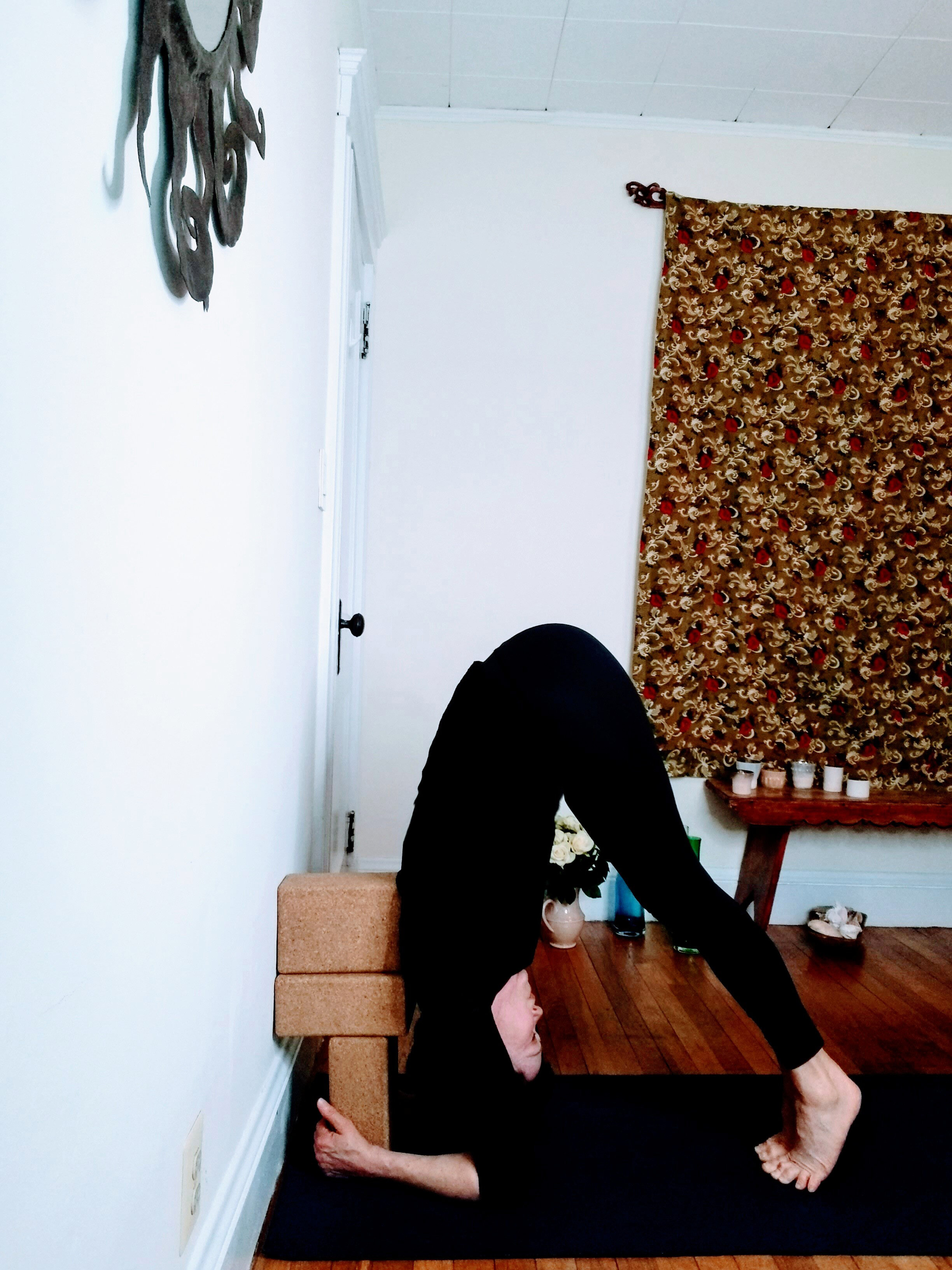Try These Two Variations of Headstand to Strengthen Your Upper Spine and Shoulder Blades
Try these two variations of Headstand, SIrsasana, to calm your nervous system, strengthen your upper back and scapulae muscles, and lengthen your spine all without putting any pressure on your neck or head.
We are all sitting in front of computers and on our cell phones so much now that our upper backs and shoulders are rounded and tight. It is really important to lengthen and strengthen our upper spine and neck, scapulae region, and open our chest. These two versions of Headstand, Sirsasana, use blocks to support you and to lengthen your upper spine, all while letting your neck and head be free.
There are some days I want to go upside down but I am not feeling ready to turn my world around or I want to work on strengthening my shoulder core (scapulae, rib cage, and upper spine). This variation of headstand is one of my go tos and one of my favorites. Your head does not touch the ground so it is safe for anyone with neck or shoulder stuff. In fact, it will help strengthen the muscles of your upper back and shoulder blades.
Stack the blocks as shown in picture. Come into forearm table, hold the bottom of the block with your hands, wrapping your fingers around the back of the block. Line up your elbows with your inner collarbones. Press down through your wrists and forearms evenly, drawing the muscle energy up into your heart. feel your shoulder core engaging. Lengthen your side body and feel how your core engages. Keep pressing down with your wrists and forearms and engaging your core as you lift your hips up. Walk in until your upper back touches the blocks. Relax your neck and allow your head to hang freely - your head should not touch the blocks or the ground. Press down through your toes and lift your arches up, engaging your core more strongly. Lengthen your tailbone and your side-body. If you can keep your core engaged and tailbone lengthening, try to walk your feet in a little closer to the blocks. (If at any point your neck or shoulders hurt or your head touches the ground, come down and rest.) Try to stay here for 5-10 breaths - breathing as gently and quietly as possible.
Let me know how it goes.
xo
Lindsay
This variation of Headstand, Sirsasana, is a little more challenging. Your head does not touch the ground -it is free floating. Your upper spine, shoulder blades, and rib cage are supported by the blocks. This variation is challenging and empowering. It stabilizes your shoulder blades and strengthens your thoracic cavity (rib cage and upper spine). In addition, it calms your nervous system. Who doesn't want that!:)
Stack three 4- inch blocks against a wall or door as shown in the picture. Come onto your forearms and knees into table and wrap your hands around the bottom block, being sure to wrap your fingers around the back edge. Align your elbows with your inner collarbones. Curl your toes under, press down through your wrists and forearms evenly, engage your core, and lift up into forearm dog. Keeping your head off the ground, walk your feet and hips in until your upper back presses against the blocks. If the blocks shift, come down and adjust them. Keep pressing evenly through both wrists and forearms, lengthening your side body, and engaging your core. You can stay in this headstand prep, if that feels best for you. If you would like to go a little deeper, engage your core and lift (not kick!!!!) one leg at a time or both legs together into headstand. Keep your back against the blocks. Continue to press down through your wrists and forearms, lengthen your side body, and extend your tailbone to the sky. Try to stay here for 3 to 5 breaths. Breathing as gently and quietly as possible. If your head touches the floor at any point come down!
To come out of the pose, press down through your wrists and engage your core as you slowly lower one leg down and then the other and come into child's pose. Rest in child's pose until your breath slows down.
Let me know how it goes.
Much Love,
Lindsay


